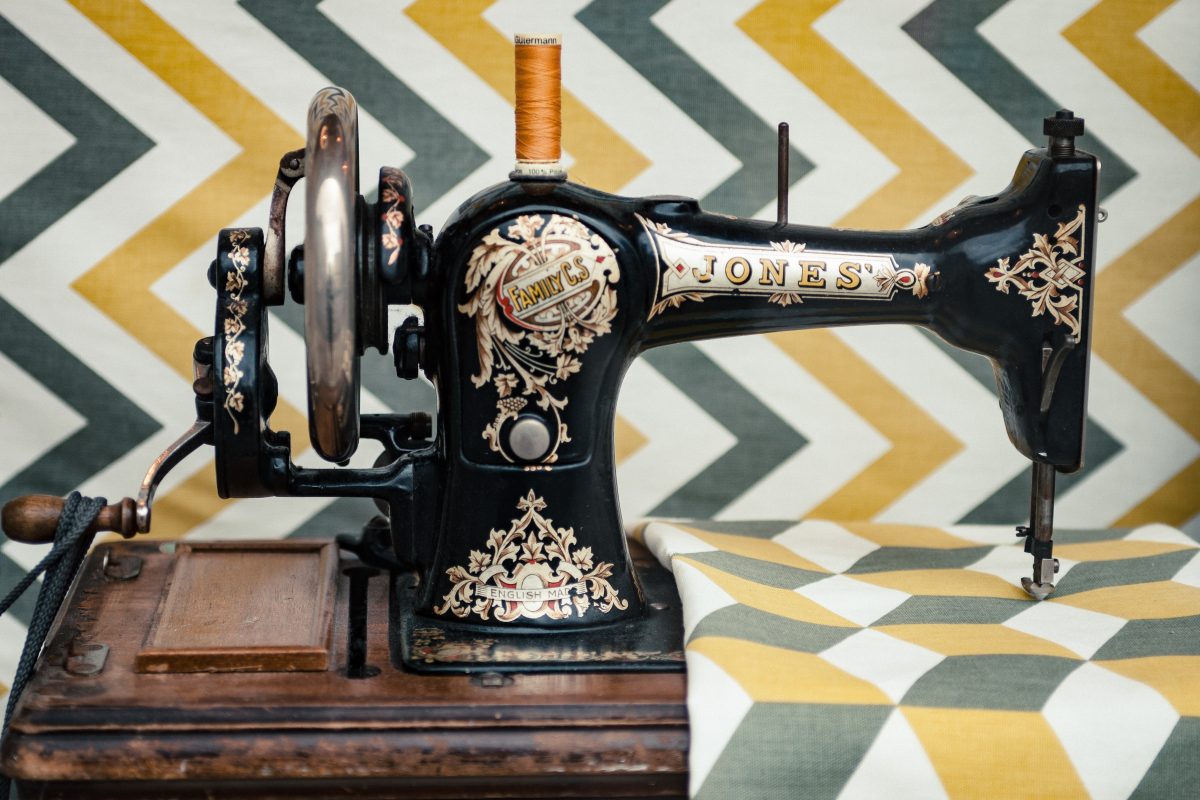
As someone who loves taking on crafty projects, I was thrilled to receive a sewing machine from my husband one year for my birthday. However, when the needle broke for the first time last year, I set it aside. When Jennifer Dawson reached out to me after reading this post on The Big To-Do List, asking if she could share some of her knowledge on caring for sewing machines, I was thrilled to take her up on her offer. Read on for tips on how to maintain a sewing machine.
Thanks to shows like Project Runway, sewing is once again gaining popularity on the North American continent, including Canada. After skipping a generation or two when clothing prices dropped and sewing seemed to be limited to middle-age spinsters, more and more people are taking to making their clothes, toys and even crafts for the home. While many people still prefer to sew by hand, more and more are taking advantage of the technological advances made in the field of sewing machines to get the job at hand done in the most convenient way possible. A sewing machine can be a lifelong investment and, if you look after it properly, it will not only last longer, but sew better as well. Here are a few guidelines on how to maintain a sewing machine, to help you keep your sewing machine in tip-top shape for as long as possible.
It’s true that nothing works better than a well-oiled machine. Just like your car, your sewing machine needs to be well-lubricated to perform at its best. Sewing machine oil can be purchased from most machine outlets, craft stores and even online and is specifically designed for sewing machine lubrication. A high-quality oil is generally clear and won’t stain your fabrics should a drop or two come into contact with it. Once you have oiled your machine according to the user manual, remove any excess oil by sewing over a piece of scrap material. It is important to always consult your machines instruction manual prior to engaging in any maintenance tasks as some machines are self-lubricating and don’t need to be oiled.
While many people suggest you use compressed air to clean out your machine it is known to add moisture which creates mucky lint which can clog and jam your machine. Instead make use of a nylon-fiber brush to remove any dust particles, bits of thread and lint that could end up influence the workings of your machine. Gently brush clean all accessible parts of your machine including the bobbin case and give the outside surface a wipe with a cloth to remove any loose dust. Keep your machine covered when it is not in use to avoid any dust settling on it or getting into the moving mechanisms.
A needle that is blunt or bent can result in broken or looped thread, pulled fabric, skipped stitches and even damage to your sewing machine. In order to change your needle at the recommended intervals you will need to take note of how much sewing you do. Experts recommend that a needle gets changed after every 8 hours of work, or every time a project is completed. Sometimes needle changes are necessary before the 8-hour mark is reached, especially if you make drastic changes to the type of fabric you are working with.
Even if you do take care of your machine at home, it is recommended you take it to be serviced by a professional at least every 2 to 3 years (if you use it regularly). Make sure to find a reputable technician, preferably one that is experienced in working on your specific brand. Servicing is a great idea regardless of whether you have a cheap machine or a high-tech, expensive one. You will be able to extend the lifespan of your machine substantially if you have it regularly serviced by a good repairman. It doesn’t matter whether you are a pro at sewing or a first-time sewer, the same servicing rules apply to everyone.
As harrowing as the thought of maintaining a piece of mechanical equipment like a sewing machine may sound, it really can be virtually effortless. As long as you familiarize yourself with the instruction manual, follow the guidelines above and make the time to do routine maintenance at regular intervals, you will be able to keep your sewing machine sewing strong for many years to come.
The Best Sewing Machines for Beginners – Stitch and Sew – https://www.stitchandsew.net
How To Shop For Sustainable Toys This Holiday – The Big to-Do List – https://thebigtodolist.com/s
Protect Your Sewing Machine With 6 DIY Cover Patterns – Craftsy – https://www.craftsy.com/sewi
Jenny Dawson is a freelance writer and editor. Before moving into freelancing she ran her own haberdashery for many years and still has a real passion for all things craft-related. When not writing she loves to sew (obviously), including making clothes for her children and as gifts for friends.
This post contains affiliate links. If purchases are made through these links, we may make a small commission to help fund this blog. You can read my full disclosure statement here.